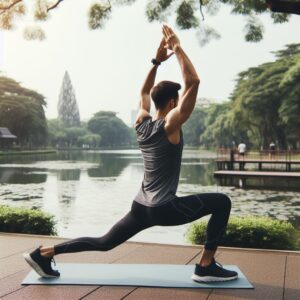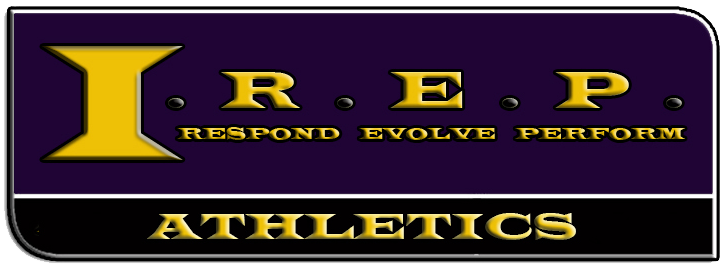Understanding Common Triathlon Injuries
Runner’s Knee, scientifically known as Patellofemoral Pain Syndrome, primarily occurs from the stress of repetitive knee flexion and extension, which is common during the running segment of a triathlon. This condition results in pain around or behind the kneecap where it connects with the lower part of the thigh bone. This is exacerbated by weakness in the quadriceps and hips, as well as imbalanced muscle strength.
Achilles Tendinitis arises when the Achilles tendon, the band of tissue connecting calf muscles to the heel bone, becomes inflamed. This condition is caused by repetitive stress to the tendon, inadequate recovery times, and sudden increases in training intensity or duration. Symptoms include pain and stiffness along the Achilles tendon, particularly in the morning, and worsen with activity.
Plantar Fasciitis is characterized by a sharp pain in the bottom of the foot, most notably near the heel. This condition stems from inflammation of the plantar fascia, a thick band of tissue running across the bottom of your foot that acts as a shock absorber. Overuse, improper foot structure, and inadequate footwear often contribute to its onset.
Unique to the swimming portion of a triathlon, Shoulder Impingement occurs when the space between the shoulder blade and rotator cuff narrows, causing the cuff tendons to rub against the blade. This can lead to pain and restricted shoulder movements, particularly reaching overhead motions which are integral to swimming strokes.
Iliotibial Band Syndrome (ITB Syndrome) occurs when the iliotibial band, which runs along the outside of the thigh from the hip to the shin, becomes tight or inflamed. This syndrome presents as sharp, burning pain on the outside of the knee. It is prevalent among cyclists and runners in triathlons due to repetitive knee flexion under load.
Training Adjustments for Injury Prevention
One of the fundamental principles for injury prevention in triathlon training is the careful management of training intensity and volume. An abrupt increase in either can overwhelm the body and lead to injuries. A widely recommended approach is the “10% rule,” which advises against increasing training volume by more than 10% each week. This allows the body to adapt gradually to increased demands without overstressing any particular muscle group or joint.
Cross-training is important for balancing the muscle use and overall fitness of a triathlete. By engaging in various types of exercises such as swimming, cycling, running, strength training, and flexibility workouts, athletes can ensure that all muscle groups are adequately strengthened and conditioned.
Incorrect bike fit can lead to back and knee pain, while inefficient running form can increase the load on the legs, leading to joint and muscle injuries. Regular sessions with a qualified coach to monitor and correct techniques in swimming, cycling, and running can drastically reduce the likelihood of such issues. Video analysis can be particularly effective in identifying and correcting biomechanical inefficiencies.
Stretching
 The purpose of stretching is to increase the elasticity of muscles and improve the joints’ range of motion. This process enhances flexibility and allows athletes to move more freely and efficiently without expending excessive energy. This results in better performance, as athletes can execute movements smoothly and with less strain. Maintaining good flexibility is vital in balancing muscle groups. Often during exercise, especially in repetitive activities like running and cycling, some muscles can become tight and others overly strained, leading to imbalances that can significantly increase the risk of injuries.
The purpose of stretching is to increase the elasticity of muscles and improve the joints’ range of motion. This process enhances flexibility and allows athletes to move more freely and efficiently without expending excessive energy. This results in better performance, as athletes can execute movements smoothly and with less strain. Maintaining good flexibility is vital in balancing muscle groups. Often during exercise, especially in repetitive activities like running and cycling, some muscles can become tight and others overly strained, leading to imbalances that can significantly increase the risk of injuries.
Dynamic stretching warms up the body and prepares it for the demands of physical exercise. It involves moving parts of the body and gradually increasing reach, speed, or both. This type of stretching is beneficial before workouts or competitions, as it helps to increase blood flow to the muscles, reduce stiffness, and decrease the risk of injury.
Static stretching is about holding a stretch for a prolonged period, typically between 15 to 30 seconds. This kind of stretching is best suited to the post-workout cooldown phase. It helps in gradually reducing the heart rate and relaxes the muscles by extending their length and reducing muscle tension post-exercise. This helps prevent muscle stiffness and soreness, which can adversely affect an athlete’s recovery and performance.
When adopting stretching into the training regimen, athletes must focus on technique and correct execution to avoid adverse effects. Overstretching or incorrect performance of stretching maneuvers can lead to muscle tears, which may result in long-term setbacks. Athletes need to stretch within comfort limits and ensure that the muscle is relaxed during static stretching to avoid potential harm.
Listen to Your Body
When triathletes train, they create small tears in muscle fibers, which then need to be repaired to become stronger. This process requires rest. Without sufficient downtime, the body doesn’t have the opportunity to complete these necessary repairs, which can lead to decreased performance and increased risk of injuries. Sleep is vital during this phase as it enhances muscular recovery through the synthesis of protein, helps to manage stress hormones, and consolidates memory, which is important for mastering technical skills in swimming, cycling, and running.
Athletes often show clear signs when they are not getting enough rest. These can include prolonged muscle soreness, feeling unusually tired, irritability, and a decline in performance. Psychological fatigue is just as significant, manifesting as a lack of motivation and decreased enthusiasm for training. The immune system can be compromised due to overtraining and lack of rest, leading to increased susceptibility to infections, which can further sideline an athlete and disrupt their training schedule.
Incorporate rest days into the training schedule. These are days when the intensity of physical activities is significantly reduced or completely avoided. Rest days help to prevent chronic injuries and mental burnout, making them as critical as active training days.
Active involves engaging in low-intensity exercise after days of heavy training. Activities such as light swimming, cycling at a gentle pace, or a relaxed walk help stimulate blood flow to muscles without straining them, aiding in quicker recovery.
Consuming the right balance of carbohydrates, proteins, and fats ensures the body has the necessary building blocks to repair itself. Hydration is good for the recovery process, as it helps maintain optimal bodily functions and aids in the prevention of muscle cramps and injuries.
